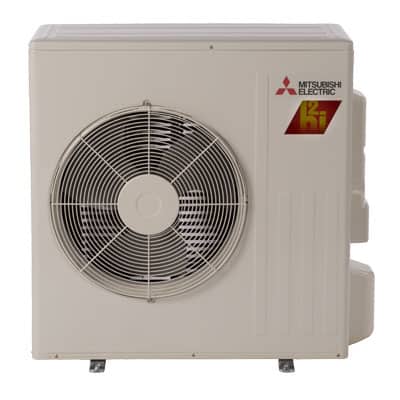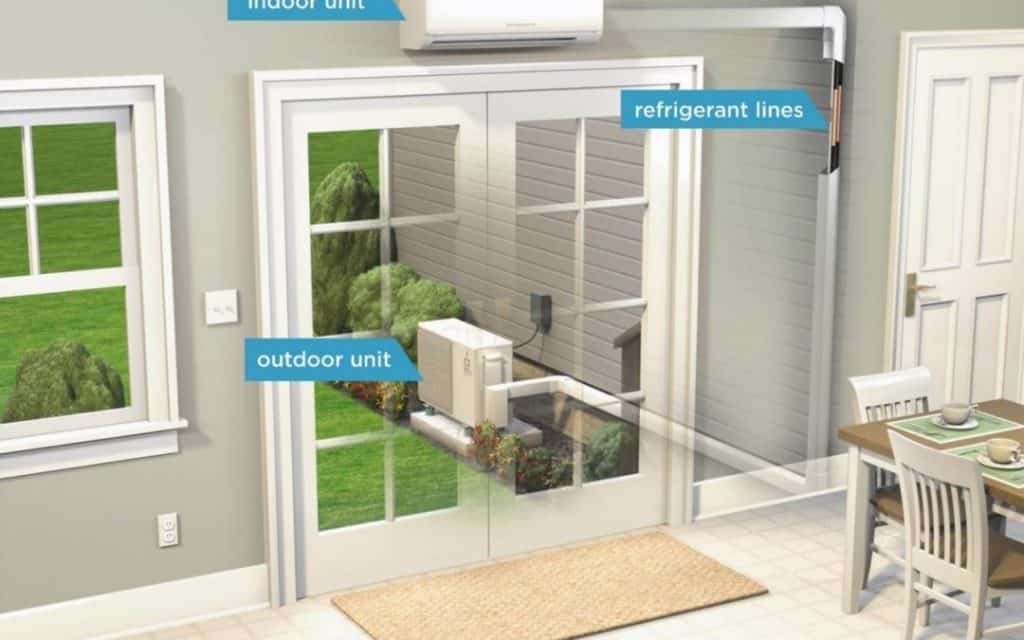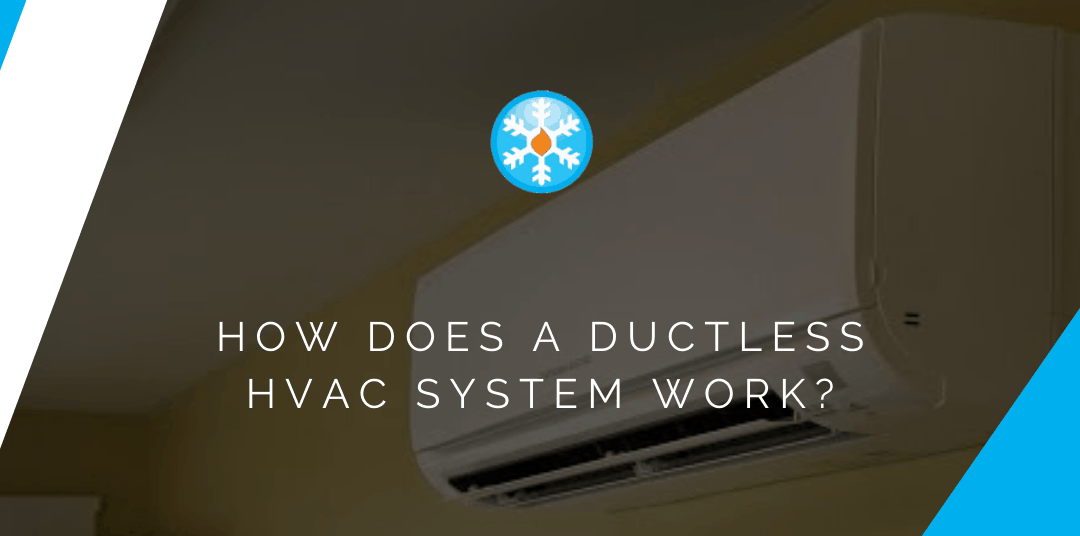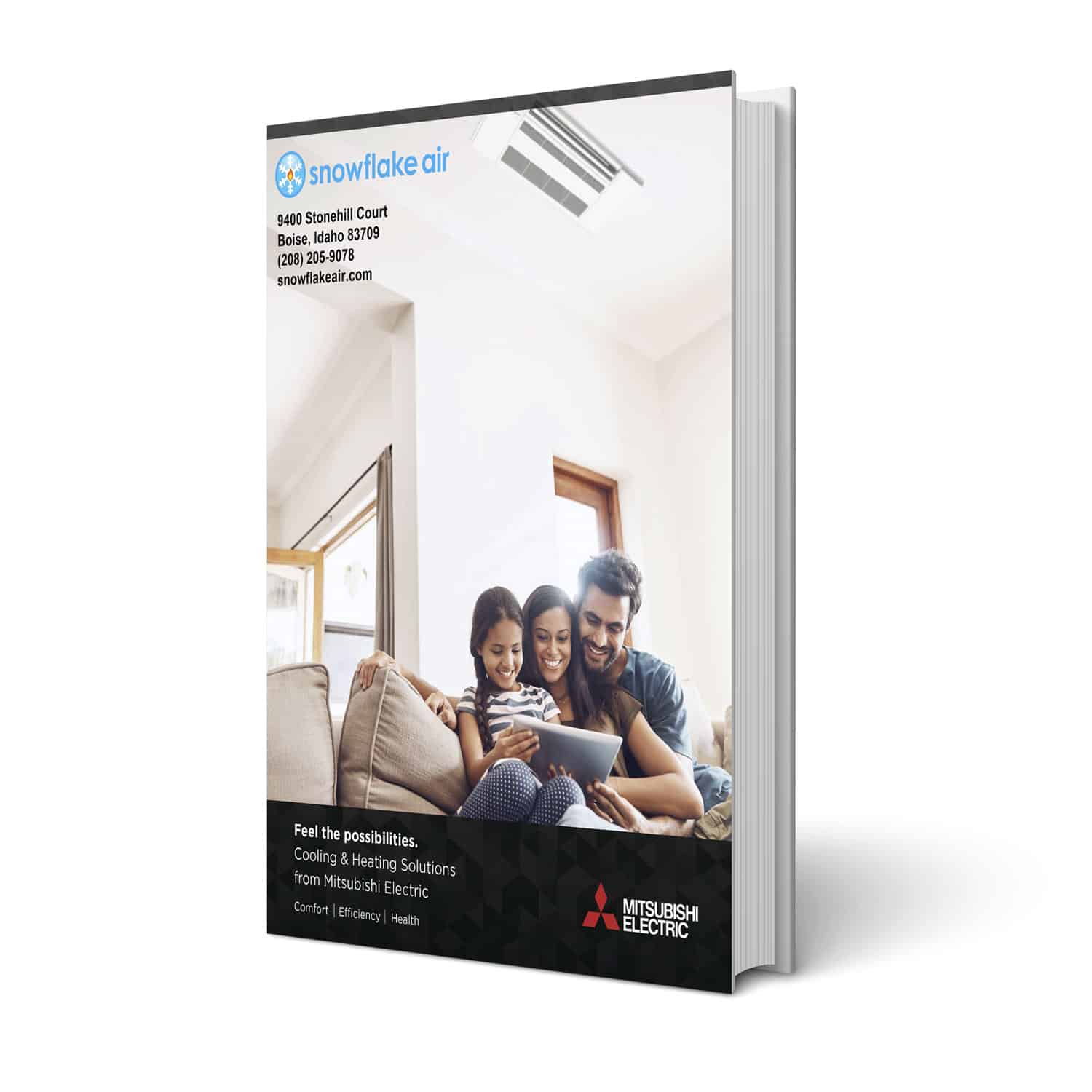Mini splits heat or cool the air in your home without ductwork and vents. Instead, they use heat pumps and air handlers that often appear to be unconnected. That’s why these setups are sometimes called “ductless heating and cooling.”
The three components of these systems are:
- Heat pumps that transfer thermal energy
- Air handlers that circulate the air inside your home
- Linesets connecting the air handlers and heat pump
As a Mitsubishi Diamond Dealer, Snowflake Air has been a huge proponent of these systems for homes in Boise, Kuna, Meridian, and Eagle, ID. Ductless heating and cooling has been very popular in Europe for a long time, and now we’re seeing a surge of them in the U.S. We’ve seen the benefits these systems offer, and the many happy customers we’ve had in Southwest Idaho.
Ductless systems are growing in popularity because they have the benefits of separate zones, lower operating costs, easy installation, flexibility, and more.
But, we often get questions about how these work, exactly. After all, people are very used to ducts and vents. And, they understand how baseboard heat, radiators, and window or portable ACs work.
Well, that’s what we’re explaining in this article: We’ll go through what the different components of a mini split do and how they all go together. If you have questions or want to learn more about how a setup like this would work in your home in Idaho, please call or email us here at Snowflake Air! We’re excited to help you learn more.
Read More: How Much Does A Mini Split Cost for Homes in Boise, ID and Valley County?
Heat Pumps
A heat pump is an outdoor unit that acts as your AC compressor in the summer and furnace in the winter. But, unlike conventional furnaces and boilers, they don’t use fossil fuels, or even electricity, to generate the warmth you feel inside.

Instead, these use a “heat transfer” process to move thermal energy (the fancy term for “heat”) from one place to another.
When it’s cold out, it’s moving the thermal energy inside. In the summer, it takes the heat from your house and dumps it outside. We’ll start with the cooling since it’s the more straightforward process.
Inside your home, an air handler draws in the air from a room. In the summer, the air is hot, and that thermal energy heats up a refrigerant liquid or coolant.
That coolant runs in a loop from the air handlers to the heat pump. When it gets warm, it evaporates and carries the heat outside.
The heat pump forces the coolant to release the heat, making it condense back into a liquid. That heat gets dumped outside, and the coolant travels back inside.
These systems often run for long periods of time,. But, contrary to what some people think, mini splits don’t run all the time. However, working for long stretches in low power mode uses less energy while creating better comfort.
Read Real Case Studies Of Mini Split Installations In Boise Metro and Valley County
Heating vs. Cooling
In the winter, it’s the same idea in reverse. This time, thermal energy in the air warms up the coolant inside the heat pump. Then, the heat travels inside and reaches the air handler, which is drawing in the cold air from the room.
Inside the handler, the heat transfers from the coolant to the air. The now-warm air gets circulated back into the room.
Now, the trick here is that there’s not a lot of heat outside during the winter. But, there’s always at least a little thermal energy. So, the heat pump draws in what it can and then amplifies it through a compression process.
However, not every heat pump is made to keep your home warm all winter. For that, you want Mitsubishi’s Hyper Heat models. The non-Hyper Heat models are designed only with cooling in mind. They can offer a little bit of heating — more on that later — but not enough to take the place of a furnace or boiler.
Air Handlers
As we mentioned already, the air handlers circulate the air in a room. This is why the system works without ductwork: You don’t need warm air to come from a furnace or boiler in the winter.
Nor do you need all the warmth in your home to pass through a condenser for air conditioning.  Instead, the air handler draws in the air from the room where it’s located. Once it treats the air by either adding or removing thermal energy, it recirculates it in the same space.
Instead, the air handler draws in the air from the room where it’s located. Once it treats the air by either adding or removing thermal energy, it recirculates it in the same space.
Remember, it’s only the coolant traveling between the components, not the air. Just like a traditional furnace or AC, a mini split doesn’t draw in air from outside.
Also, in the summer, the air handler acts as a dehumidifier. Removing water vapor is an essential part of the cooling process.
Putting it All Together
Finally, there’s a lineset that connects the heat pump and air handlers. You have three lines coming from an air handler: the power cord, a condensate line that drains water from the dehumidification process, and a tube that carries the coolant from the handler to the pump.
We group all three of these in a casing or lineset. And, most of the time we can run these lines through the wall behind the air handler.

That creates the illusion that the air handler is just hanging there, not attached to anything: You don’t see where the lines come out and travel to other places. Now that you know the “how,” let’s talk about the “why.”
Read More: Rebates and Financing Options For Treasure Valley Heat Pump and Mini Split Installations
Mini Splits Vs. Forced-Air HVAC
Mini splits offer the same power and whole-home capabilities of a forced-air system. In other words, both are strong enough to keep you cool all summer and warm all winter. And, you can use one system to handle the entire house.
But, ductless offers some benefits that forced-air doesn’t. The big difference is “Zoned HVAC.” With ductless, each air handler has a built-in thermostat. So, you can set each one to whatever temperature you want.
Then, that air handler works independently of the others. With forced-air, you usually have one thermostat on the first floor that regulates the entire house.
That’s why your bedrooms are generally a couple of degrees hotter or colder than you want them. For starters, the forced-air system loses pressure with each floor.
So, if you have three floors, you notice a huge difference. But, even the average two-story suburban home gets less heating and cooling upstairs.
Then, there’s the one-thermostat problem: the gauge in your living room or dining room isn’t reading the temperature difference upstairs.
But, it shuts off the system once the first floor is treated. That makes the difference even worse.
With a mini split, you can get even heating and cooling because you’re controlling the settings for virtually every room individually.
Ductless Mini Split Installation in Kuna, ID
Ductless heating and cooling systems need to be installed by a professional who can design zones, ensure correct sizing, and install your ductless system correctly. If you want to know more about ductless systems or would like a free estimate for a mini split installation in Kuna, ID, Boise Metro, or Valley County, contact Snowflake Air today.





Trackbacks/Pingbacks